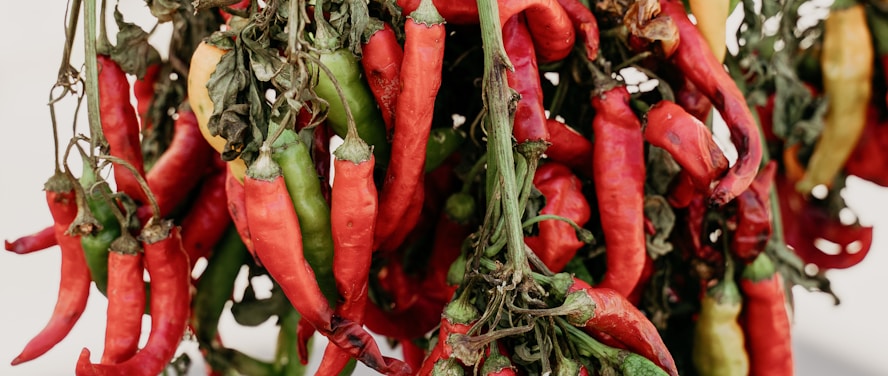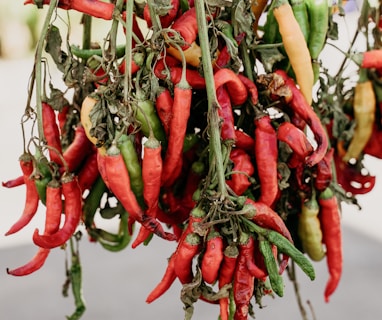"Red in Chinese Traditional Medicine: Unveiling the Vitality and Benefits of Red-Colored Herbs in TCM"
6/27/20233 min read


In Chinese traditional medicine (TCM), red holds a significant place, symbolizing life, energy, and passion. Red-colored herbs have long been utilized for their therapeutic properties, catering to various aspects of human health. This article delves into the profound meaning of red in traditional Chinese medicine, exploring its associations and presenting the key benefits of red herbs.
The Symbolic Significance of Red:
Vitality and Fire Element
· Red represents the fire element in TCM, symbolizing warmth, enthusiasm, and vitality.
· Fire is associated with the heart and its corresponding emotions of joy, passion, and love.
Blood and Circulation:
· Red reflects the essence of blood, which carries vital nutrients and oxygen throughout the body.
· It is linked to the heart’s role in maintaining proper circulation and nourishment.
Emotional and Spiritual Aspects:
· Red is associated with the Shen, or spirit, in TCM, representing consciousness and emotional well-being.
· It promotes positive emotions, confidence, and a zest for life.
Key Benefits of Red-Colored Herbs
Nourishing Blood and Vitality:
· Red herbs enhance blood circulation, addressing anemia and fatigue.
· They nourish the heart, supporting cardiovascular health and promoting vitality.
Regulating Emotions:
· Red-colored herbs harmonize the Shen, promoting emotional balance and reducing anxiety or restlessness.
· They support mental well-being, alleviate depression, and enhance overall mood.
Enhancing Sexual Health:
· Red herbs are often utilized to support reproductive health, boost libido, and address issues related to sexual vitality.
· They nourish the kidneys, promoting hormonal balance and benefiting sexual function.
Supporting Heart Health:
· Red herbs are believed to strengthen the heart, improve its function, and support cardiovascular health.
· They may help regulate blood pressure, reduce the risk of heart disease, and maintain optimal heart rhythm.
Anti-inflammatory and Antioxidant Properties:
· Many red-colored herbs possess potent anti-inflammatory and antioxidant properties.
· They help combat oxidative stress, reduce inflammation, and protect against chronic diseases.
Improving Digestion:
· Some red herbs aid digestion, promoting healthy metabolism and alleviating digestive discomfort.
· They may enhance appetite, relieve indigestion, and support the spleen and stomach functions.
Skin Health and Radiance:
· Certain red-colored herbs are renowned for their benefits to the skin.
· They promote circulation, nourish the complexion, and may help improve skin conditions such as acne or dullness.
Foods that Has Red Benefits
1. Red Berries:
» Strawberries: Packed with antioxidants, vitamin C, and fiber, strawberries promote heart health, boost immunity, and support healthy skin.
» Raspberries: These antioxidant-rich berries are a great source of dietary fiber, manganese, and vitamin C, offering anti-inflammatory and anti-aging benefits.
» Pomegranates: Known for their abundance of antioxidants, pomegranates help reduce inflammation, support heart health, and may have anticancer properties
2. Tomatoes:
» Tomatoes are a versatile red fruit rich in lycopene, an antioxidant associated with a reduced risk of heart disease, certain cancers, and eye conditions.
» They are also a good source of vitamin C, potassium, and vitamin K, contributing to healthy skin, immune function, and bone health
3. Red Bell Peppers:
» Red bell peppers are a nutritional powerhouse, boasting high levels of vitamin C, vitamin A, and antioxidants.
» They support immune function, improve eye health, and contribute to collagen production for healthy skin.
4. Watermelon:
» Refreshing and hydrating, watermelon is a nutrient-rich fruit.
» It is a good source of vitamins A and C, lycopene, and citrulline, which promote heart health, hydrate the body, and support muscle recovery.
5. Red Grapes:
» Red grapes contain resveratrol, an antioxidant associated with heart health and potentially reducing the risk of certain cancers.
» They are also a source of vitamin C, vitamin K, and fiber, contributing to overall well-being and digestion.
6. Beets:
» Beets are vibrant root vegetables rich in antioxidants, nitrates, and betaine.
» They support healthy blood pressure, enhance exercise performance, and promote detoxification.
7. Red Lentils:
» Red lentils are a nutritious legume variety, providing an excellent source of plant-based protein, fiber, iron, and folate.
» They support energy production and digestive health and are beneficial for cardiovascular well-being.
8. Red Cabbage:
» Red cabbage is a cruciferous vegetable packed with vitamins A, C, and K, antioxidants, and fiber.
» It supports immune function, reduces inflammation, and promotes healthy digestion.
Conclusion
Red in Chinese traditional medicine is deeply intertwined with life force, passion, and vitality. Red-colored herbs offer various benefits, including cardiovascular support, emotional balance, reproductive health, and more. With their ability to nourish the blood, regulate emotions, and enhance overall well-being, these herbs hold a special place in TCM. Embrace red herbs' vibrancy and therapeutic potential to unlock a renewed sense of vitality and holistic health.
